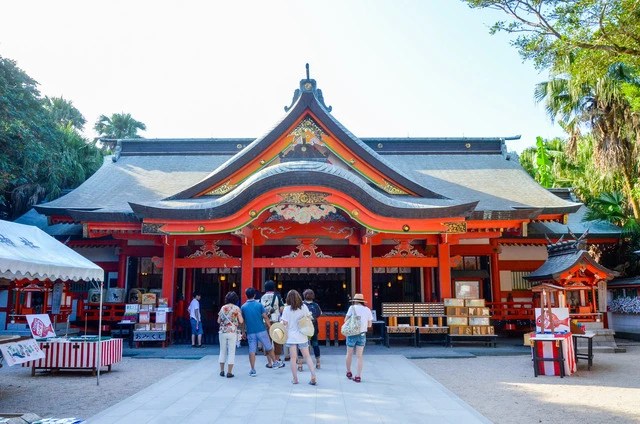Tomorrow the new postcards are released into post offices across Japan, so to kick off that exciting event, here’s some information about Miyazaki’s newest postcard, featuring the amazing Aoshima Shrine. The shrine is located on the tiny sand- and tree-covered island of Aoshima, and is surrounded by a unique geological feature called the “Devil’s Washboard” which can be seen at low-tide. It’s definitely worth a trip!

Heading out to the island, the bridge is relatively new. These days, anyone can visit at anytime, but 100 years ago or so, the island was considered sacred, so normal people could only visit 2 weeks out of the year!

Around the back in the middle of a small grove of trees is the main shrine area.

Through a small path through the trees lined with ema…

You reach the tiny shrine in the true middle of the island. It’s so peaceful!

At low tide, you can see the interesting devil’s washboard rocks. They really look man-made up close, but they are a completely natural phenomenon!
During the We Love Japan Tour 2015, my southern blogger partner Emma visited this shrine, so I recommend checking out her blog post to read all about it, and its connections to the very first Emperor of Japan, Jimmu.
Don’t forget to pick up your new Miyazaki card tomorrow, and stay tuned for more posts about the new cards!






























